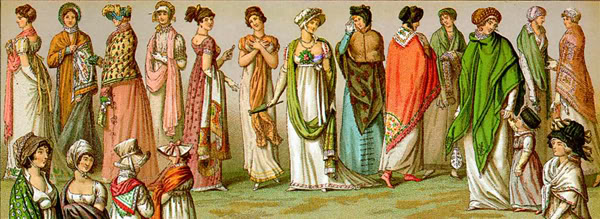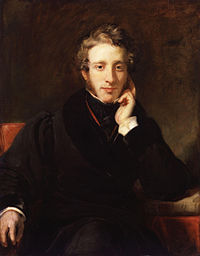The Romance Writers of America is having their annual conference from July 17 to July 20 in Atlanta this year. Unfortunately, very unfortunately, I shall not be attending.
There are so many workshops I'd love to attend though. Here, have a look—aren't there many you'd like to sit in, too? As an aspiring historical fiction writer, these are some of what I would've liked to have attended:
Career Track
Crack the Librarian Code: How to Get Your Books on Library Shelves and on Your Reader's Radar
Two librarians turned authors share how to pitch and market yourself to libraries, book clubs, and reader databases.
Honing Your Pitch
Join a multi-published author, editor, and agent as they discuss their perspectives on how to craft, prepare for, and deliver your pitch in a way that highlights the marketability of your story - and yourself as an author.
It Takes a Village: How Author, Agent, Editor, and Publisher Pull It All Together to Create a Bestseller Debut
Get a behind-the-scenes look at what works and what doesn't when it comes to pitching, titles, marketing, and more from the team that helped launch a debut author onto two national best-seller lists.
Market Like You Mean It: Out-of-the-Box Author Branding that Really Works
Speakers: Stephanie Dray, Angie Fox, Darynda Jones, and Kieran Kramer
My Agent Saved My Life: What a Good Agent Can Do for You
Four popular authors and their agent share tales from the trenches about how having a knowledgeable professional in their corner saved their literary lives.
Publishing Contracts Demystified
Attorney Jon Tandler, who specializes in corporate, intellectual property and publishing law, discusses everything you ever wanted to know about publishing contracts but were afraid to ask.
Show Me the Money!
How much can you really expect to make publishing romance novels, and how soon will you see the money? Join Brenda Hiatt for this workshop about the bottom line.
The Blog that Helped Us Sail Off Unpubbed Island
Speakers: Mary Connealy, Janet Dean, Debby Giusti, Myra Johnson, Sandra Leesmith, and Missy Tippens
Learn how group blogging helped these aspiring authors sail straight to publication.
The Do-Over: Five Authors Dish on Lessons Learned
Speakers: Katharine Ashe, Grace Burrowes, Tessa Dare, Vicky Dreiling, and Kieran Kramer
The Review Game: the Shy Girl's Guide to Getting Noticed
Learn how to get reviewed and create reader buzz about your book. This workshop covers the nitty-gritty of discoverability: how to navigate the landscape of major review venues, book blogs, GoodReads, and book retail sites as well as the ABCs of ARCS, galleys, and review requests.
The Tiny Art of Elevator Pitches
Learn which buttons to punch to take you from the basement to the penthouse and get that coveted request. Come prepared with a pitch of fifty words or less, as Carrie Lofty will be providing on-the-spot feedback to all who attend.
Your Readers Are Out There. Find Them
Speakers: Sheri Brooks, Stella Cameron, Cissy Hartley, and Jayne Ann Krentz
Craft Track
Does Your Query Letter Make the Cut?
Speakers: Margo Lipschultz, Kevan Lyon, and Katie McGarry
A Harlequin editor, literary agent, and Harlequin Teen author discuss what makes an amazing query letter that will grab the attention of agents and editors and give comments and advice on query letters supplied by the audience.
Double D’s: Dynamic Description and Delicious Dialogue
Everyone tends to be better at writing one of the big D's: dynamic description and delicious dialogue. A series of exercises shows how to turn your gift for vivid description into compelling dialogue or your gift for sparkling dialogue into lyrical description.
Emotional Resonance: Elevating a Good Book to a Keeper
Speaker: Tanya Michaels
The more your story emotionally resonates with readers, the longer they remember it and the more they share it with others. Join a four-time RITA nominee for a look at how to capitalize the emotional impact in your book from laughter to fear to tears.
Finding Your Voice
Speaker: Debra Dixon
Spend some time with story guru Debra Dixon for a fresh perspective on exactly what voice is, why voice is both a tool and a gift, and how writers with voice can stand out from the crowd of authors clamoring for a reader’s attention.
From Identity to Essence: Love Stories and Transformation (**My Top Fave)
Speaker: Michael Hauge
Hollywood story consultant Michael Hauge (best-selling author of Writing Screenplays That Sell and Sell Your Story in 60 Seconds: The Guaranteed Way to Get Your Screenplay or Manuscript Read) shows why love stories are a writer’s most powerful vehicle for developing character arc. He’ll reveal how love triangles can strengthen your underlying themes, how the rules of romantic comedies can be applied to romance novels, and how understanding your protagonists’ wounds, emotional fears and protective identities will lead to richer, more powerful love stories.
No More Sagging Middles
Learn the reasons why a book's middle sags and how to fix these common problems to keep the reader turning the pages.
Seven Secrets to Writing a Synopsis
Learn a foolproof method for writing a synopsis based on identifying and describing the five major plots points in a romance story arc.
Visceral Rules: Beyond Hammering Hearts
Speaker: Margie Lawson
Learn how to write visceral responses so smooth and powerful your reader will feel your character's emotions like they're her own.
Whoa, Do I Do That?
Some classic hallmarks of novice writing may be making your manuscript scream "rookie!" to editors, agents, and readers alike—even if you're not a beginner at all. Learn to spot these common practices and address them.
Self Publishing Track
Best Practices and Formatting for Self-Publishing
Speaker: Gerri Russell
E-books Made Easy with Scrivener
Scrivener's more than a writing and plotting software program. Learn quick and easy strategies to get the most out of Scrivener, like exporting to EPUB formats.
Editing Your Self-Published Novel
Speakers: Anna DeStefano and Kerry Vail
Need freelance editing? Two successful freelance editors will discuss various editorial services and how to put together the right team for your book!
Beyond the Basics in Self-Publishing: Audio, Foreign Translations, POD, and More
Speakers: Bella Andre and Tina Folsom
Focus on Amazon
Speakers: Jon Fine, Thom Kephart, and Jason Ojalvo
From KDP to CreateSpace, Audiobook Creation Exchange (ACX), and author marketing opportunities, find out everything you want to know about publishing and selling books on Amazon from Amazon representatives.
Focus on Smashwords
Smashwords CEO Mark Coker discusses everything you want to know about self-publishing your book on Smashwords.
From Ground Zero to Best-selling Author in Two Years: the Indie Revolution
Find out how Liliana Hart went from ground zero—no fan base, no traditional publisher, and no recognizable name—to best-selling author, selling 800,000 books in less than two years.
Getting Down to the Sexy Nitty-Gritty: a Literary Agent and Publishing Attorney Talk Self-Publishing
Agent Kristin Nelson and attorney Jon Tandler discuss the not-so-sexy parts of self-publishing: contracts, legal issues, working with agents, and developing a hybrid career.
Self-Publishing Chat with Barbara Freethy and Bella Andre
Self-Publishing Roundtable: Marketing
Speaker: S.R. Johannes
Self-Publishing Roundtable: Metadata, Keywords, and Back Matter
Speaker: Courtney Milan
Top 10 Tips for Self-Publishing E-books
Speakers: Bella Andre and Barbara Freethy
Research Track
A Nose for Love: A Romance Writer's Guide to Smell and Taste
Speaker: Virginia McCullough
Playing Dress-Up: Creating an Authentic Wardrobe for Regency Characters
Speakers: Debbie Kaufman and Gail Marcoux
The Beau Monde
The Grand Tour with Regina Scott
Medical Topic with Sharon Lathan
Regency Underworld with Erica Monroe
Learn to Play Whist with Ashlyn Macnamara





 Are you a fan of the first Duke of Wellington of Georgian and Regency English fame? If so,
Are you a fan of the first Duke of Wellington of Georgian and Regency English fame? If so, 
 Have you seen the BBC TV series
Have you seen the BBC TV series  While you may not be barmy, you could still be a modern-day Monarch of the Glen by putting down a spare seven million pounds to buy
While you may not be barmy, you could still be a modern-day Monarch of the Glen by putting down a spare seven million pounds to buy 
 Very unfortunately, the following documentary is only for UK residents. Hopefully, sometime in the near future, it'll come out on DVD, like other of Michael Wood's works, or it'll be broadcasted by PBS.
Very unfortunately, the following documentary is only for UK residents. Hopefully, sometime in the near future, it'll come out on DVD, like other of Michael Wood's works, or it'll be broadcasted by PBS.

 I
I 
 Armitage and Heyer in one package is like eating too many sweets. Oh, the joy! His sexy voice and various character roles couched in excellent stage diction make Heyer's words come alive. Her humor carries well, as well as the subtle witty repartee between the protagonists.
Armitage and Heyer in one package is like eating too many sweets. Oh, the joy! His sexy voice and various character roles couched in excellent stage diction make Heyer's words come alive. Her humor carries well, as well as the subtle witty repartee between the protagonists. 






 Out of the blue, I blogged on June 19 about
Out of the blue, I blogged on June 19 about 





 So, better late than never, right? I'm a huge romance reader as those of you who read my blog know. And yet, today's the first day I found out that August has been deemed as the
So, better late than never, right? I'm a huge romance reader as those of you who read my blog know. And yet, today's the first day I found out that August has been deemed as the  Since 1982, the English Department at San Jose State University has sponsored the
Since 1982, the English Department at San Jose State University has sponsored the  In his researches, Dr. Rice unearthed this pearl of an opener...
In his researches, Dr. Rice unearthed this pearl of an opener...
 All good things come in threes, right?
All good things come in threes, right?



 The 1869 edition of
The 1869 edition of 



 Kelmarsh Hall in Northamptonshire, England will be hosting Europe's biggest historical event, titled
Kelmarsh Hall in Northamptonshire, England will be hosting Europe's biggest historical event, titled  Check this one out: "Our Victorian Gymkhana features both ladies and gentlemen competing in a series of relay races that require considerable skill, including the ability to carry a glass of champagne at full gallop (and drink it from the back of a horse!)"
Check this one out: "Our Victorian Gymkhana features both ladies and gentlemen competing in a series of relay races that require considerable skill, including the ability to carry a glass of champagne at full gallop (and drink it from the back of a horse!)" "The BBC History Magazine Lecture Tent brings together some of Britain's finest historians and historical writers, giving visitors the opportunity to listen to talks and ask questions on some of the key moments in England's history."
"The BBC History Magazine Lecture Tent brings together some of Britain's finest historians and historical writers, giving visitors the opportunity to listen to talks and ask questions on some of the key moments in England's history."
 The Mold Cape is a unique ceremonial cape of gold, made during the Early Bronze Age c.1900–1600 BCE, around 3,700 years ago. Made from a single sheet of beaten gold, it was found in Mold, Flintshire, Wales in 1833 at the centre of a circular mounded burial monument known as a barrow. Recent research of the burial site and the grave goods found there has suggested that the wearer of the cape may have been a woman.
The Mold Cape is a unique ceremonial cape of gold, made during the Early Bronze Age c.1900–1600 BCE, around 3,700 years ago. Made from a single sheet of beaten gold, it was found in Mold, Flintshire, Wales in 1833 at the centre of a circular mounded burial monument known as a barrow. Recent research of the burial site and the grave goods found there has suggested that the wearer of the cape may have been a woman.

